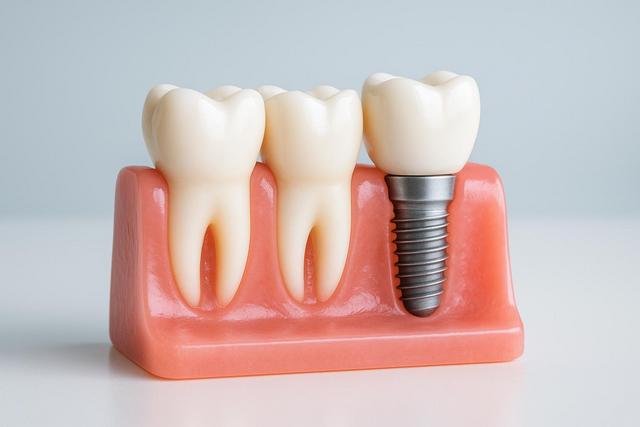
Dental Implants: Benefits, Longevity, and Everyday Care
Outline
• What a dental implant is and how it works
• Key benefits that matter day‑to‑day
• Longevity and real‑world success rates
• Who’s a good candidate and risk factors to discuss
• U.S. price ranges in 2025, what drives them, and how to comparison‑shop
• Everyday care: brushing, cleaning between implants, checkups
• Procedure timeline and what recovery looks like
• Insurance, Medicare, and coding updates to know this year
• FAQs and pro tips you can act on today
What is a dental implant—and how does it work?
A dental implant is a small post placed in the jaw that anchors a custom crown, bridge, or denture. Think of three parts working together: the implant (root‑like post), an abutment (connector), and the visible restoration (crown/bridge/denture). Consumer‑facing guidance from the American Academy of Periodontology explains indications and follow‑up care in plain language [1]. For a step‑by‑step health explainer of components, materials (titanium and ceramic), and recovery, see the Cleveland Clinic’s health library overview [2].
In everyday terms, implants aim to restore chewing confidence, stabilize adjacent teeth, and help preserve jawbone where a tooth was lost. They can be used for a single tooth, to support a short span bridge, to secure a removable overdenture, or to support a fixed full‑arch prosthesis.
Benefits you’ll notice: function, confidence, and bone preservation
Patients often choose implants because they feel stable when chewing and speaking, don’t rely on neighboring teeth for support, and help maintain the natural contour of the face by reducing bone loss after extractions. Clinician‑authored summaries highlight these functional advantages as reasons many people find implants among the top options for tooth replacement [2], [1].
That said, preserving a natural tooth remains a priority when feasible. The American Academy of Periodontology reminds patients that implants can be outstanding restorations, but they still require diligent care and regular maintenance—and saving a restorable tooth is preferable when possible [3].
How long do dental implants last? What the evidence says
Multiple long‑term reviews show high survival of implants when maintained well. A 2019 systematic review in the Journal of Dentistry found about 93–96% implant survival at 10 years (with variation by age and other factors) [4]. An ADA news summary of a 38–40‑year follow‑up cohort reports that most single‑tooth implants—and a majority of crowns—were still in function decades later, underscoring durable outcomes when maintenance is consistent [5].
Ceramic (zirconia) implants have matured, too. A 2023/2024 open‑access meta‑analysis reported a 10‑year cumulative survival rate around 95% for zirconia implants, though most studies had shorter follow‑up; more head‑to‑head data with titanium are still needed [6].
Important balance: implants can fail or develop inflammatory complications around them. A 2025 systematic review using modern diagnostic criteria estimated peri‑implant mucositis in roughly two‑thirds of adults with implants and peri‑implantitis in about one in four, emphasizing the importance of prevention and routine care [7]. Patient education and maintenance visits are the best antidote [8].
Who is a good candidate? Risk factors to discuss before surgery
Suitable candidates have adequate bone, healthy gums, and medical conditions that are controlled. Tobacco use is a clear risk factor for early implant loss and peri‑implant disease: a 2024 meta‑analysis showed smokers have about double the odds of early implant failure compared with non‑smokers, with higher risks in the upper jaw [9], and other analyses link smoking with higher peri‑implantitis risk at both patient and implant levels [10].
Other considerations include a history of periodontitis (gum disease), uncontrolled diabetes, bruxism (night grinding), and certain medications. For example, antiresorptive/antiangiogenic drugs used in osteoporosis and cancer care are associated with medication‑related osteonecrosis of the jaw (MRONJ); surgical and preventive guidance from oral surgery societies emphasizes individualized risk assessment and medical‑dental coordination [11].
Expert insight: “A thorough diagnosis and plan—including smoking cessation support, gum disease control, and a maintenance schedule—does more to protect an implant than any ‘quick fix.’”
What do dental implants cost in the U.S. in 2025?
Prices vary by region, case complexity (bone grafts, sinus lifts, extractions), materials, and whether you are treating single or multiple teeth.
| Restoration | Typical 2025 price range (per U.S. sources) | Notes |
|---|---|---|
| Single‑tooth implant (implant + abutment + crown) | $3,100–$5,800 | Range reported by media citing ADA fee data and clinician estimates [12]. |
| Short‑span implant bridge (replacing 3–4 teeth on 2 implants) | $6,000–$10,000 | Estimate reflects fewer implants but larger lab work [12]. |
| Full‑arch fixed implant prosthesis (“All‑on‑4/6”) | $23,000–$31,000 per arch | Representative provider pricing to contextualize planning; confirm locally [13]. |
Because fees are local, a neutral cost estimator helps you compare by ZIP code. FAIR Health’s free Dental Cost Estimator lets you look up procedure codes and typical allowed amounts in your area (helpful for pre‑treatment budgeting) [14].
Pro Tip: Ask for a written, itemized quote that calls out imaging (CBCT), extractions, bone grafts, membrane or sinus lift (if needed), implant, abutment, crown, anesthesia, and follow‑ups. A “global fee” can simplify budgeting, but make sure it clearly lists what is included.
Everyday care: the habits that protect your investment
Daily plaque control around implants reduces inflammation and lowers the risk of peri‑implant disease. The ADA emphasizes cleaning between teeth (and around implants) with floss or interdental brushes sized appropriately; many implant‑friendly interdental brushes use coated wire to avoid scratching components [15]. Therapeutic mouthrinses can be a helpful adjunct for plaque and gingivitis control, but they do not replace brushing and interdental cleaning [16].
Professional maintenance is equally important. Periodontal specialists advise routine evaluations and cleanings tailored to your risk (e.g., history of gum disease, smoking, diabetes, hygiene challenges) to monitor tissues and the prosthesis and to catch mucositis early [8]. If you grind your teeth at night, discuss a protective nightguard with your dentist.
Quick checklist: soft brush twice daily; clean between implants once daily; avoid tobacco; keep up with recall visits; call your dentist if you notice bleeding, swelling, looseness, or bad taste around an implant.
Procedure timeline: what to expect from consult to crown
Timelines vary, but common pathways include extraction (if needed), bone grafting (when indicated), implant placement, healing (osseointegration), abutment placement, and final restoration—often several months from start to finish. An approachable clinical overview of each step, imaging, anesthesia choices, and recovery expectations is available in a major U.S. health system’s library write‑up [2].
After placement, follow the written postoperative instructions and stick to a soft diet initially. Report persistent pain, swelling, or unusual mobility promptly.
Insurance and Medicare: how coverage works in 2025
In Original Medicare, routine dental services—including implants—are generally not covered. Medicare may pay for certain dental services only when they are directly linked to the clinical success of a covered medical procedure (for example, dental clearance before an organ transplant), with rules refined in recent CMS updates [17], [18], [19].
Medicare Advantage plans may include dental benefits, but the scope varies widely by plan. Review annual maximums, waiting periods, and whether implants are included before enrolling. For private dental insurance, implants often fall under “major services,” sometimes covered around 50% up to an annual maximum; always verify preauthorization requirements and limitations in your policy documents.
Billing note for practices and informed patients: the ADA’s CDT 2025 changes (effective January 1, 2025) include new and revised codes for restorations and implants, which can affect how treatment is documented and submitted [20].
Balanced expectations: reduce risks you can control
• Stop smoking (or get help to quit) before surgery; smokers face higher early failure and peri‑implantitis risks [9], [10].
• Treat active gum disease first and commit to maintenance—risk is higher with a history of periodontitis [8].
• Share your full medication list. If you take antiresorptives/antiangiogenics, your surgeon and physician can coordinate to minimize MRONJ risk and plan monitoring [11].
• Ask about protective devices (nightguards) if you clench/grind.
At‑a‑glance comparison of common implant solutions
| Solution | When it’s used | Care & maintenance | Typical U.S. price context |
|---|---|---|---|
| Single‑tooth implant + crown | One missing tooth | Brush + clean between daily; 6–12 month recalls | $3,100–$5,800 per tooth [12] |
| Implant‑supported bridge | 3–4 adjacent teeth missing (2 implants) | Enhanced interdental cleaning under pontics | $6,000–$10,000 per span [12] |
| Overdenture (snap‑in) | Edentulous arch, removable | Daily removal/cleaning of denture; hygienist cleans implant attachments | Varies; check local estimates with neutral cost tools [14] |
| Full‑arch fixed prosthesis | Edentulous arch, fixed | Routine professional maintenance; specialized floss/brushes | $23,000–$31,000 per arch (illustrative provider pricing) [13] |
FAQs
Dental Implants: Frequently Asked Questions
How long will my implant last?
Research suggests many implants remain functional well beyond 10 years, with 10‑year survival commonly in the low‑to‑mid‑90% range; longevity depends on your home care, risk factors, and professional maintenance [4], [7].
Are ceramic (zirconia) implants an option?
Yes—zirconia is increasingly used, with promising mid‑term to 10‑year data, though titanium has the most long‑term evidence. Discuss materials in the context of your bite, esthetics, and any metal sensitivity [6].
Can Medicare help pay for implants?
Original Medicare typically doesn’t cover implants. Limited dental services may be covered when they are integral to another covered medical treatment. Medicare Advantage plans vary; review benefits closely before enrolling [17], [18], [19].
What daily routine keeps implants healthy?
Brush twice daily, clean between teeth/implants once daily with floss or the right‑size interdental brush, consider a therapeutic mouthrinse, and keep scheduled maintenance visits. Ask your hygienist to demonstrate the technique for your specific restoration [15], [16], [8].
What’s one thing people wish they’d known earlier?
That prevention matters as much as placement. Controlling gum disease, quitting tobacco, and consistent cleanings can be the difference between decades of comfort and avoidable complications [9], [10].
Websources
1. American Academy of Periodontology – Dental Implant Procedures
2. Cleveland Clinic – Dental Implants: Surgery, Purpose & Benefits
3. AAP statement on preserving natural teeth
4. J Dent (2019) – 10‑year implant survival meta‑analysis
5. ADA News – 40‑year prognosis of single‑tooth implants
6. Clin Oral Investig (2023/2024) – Zirconia implant outcomes review
7. J Dent (2025) – Peri‑implant disease prevalence (2017 criteria)
8. AAP – Peri‑implant diseases (patient info)
9. Meta‑analysis (2024) – Smoking and early implant failure
10. Meta‑analysis (2023) – Smoking and peri‑implantitis risk
11. AAOMS – Updated MRONJ guidance (2022)
12. Forbes Health (2025) – U.S. dental implant cost ranges
13. ClearChoice – Cost guide (illustrative provider pricing)
14. FAIR Health – Consumer dental cost estimator
15. ADA – Floss and interdental cleaners
16. ADA – Mouthrinse (mouthwash)
17. Medicare.gov – Dental services coverage
18. CMS – Medicare dental coverage (policy updates, 2025)
19. KFF – Changes to Medicare coverage of dental services (2023–2024 rules)


